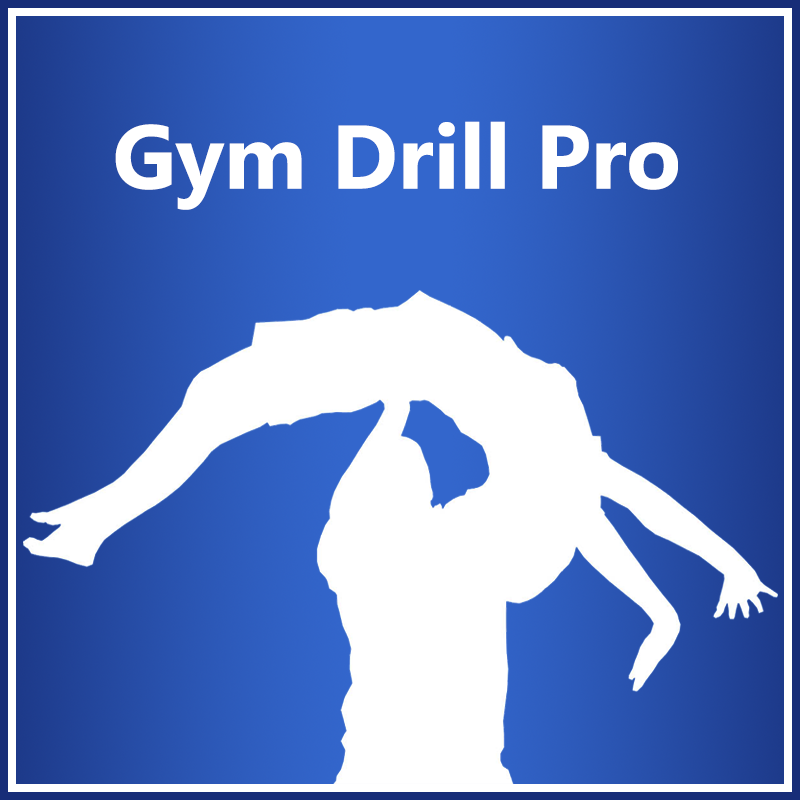

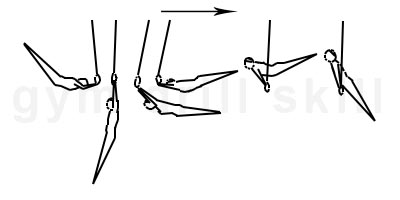
The gymnast should perform a high amplitude backswing. At the bottom the gymnast should kick strong with their heels, pressing down from their shoulders. Their head should stay in a neutral position. When their legs are over horizontal, the gymnast should move their arms sideways with downward pressure on the rings, performing a back circle. After completing the circle, the gymnast should keep their arms by their sides and hold front support on the top of the rings.
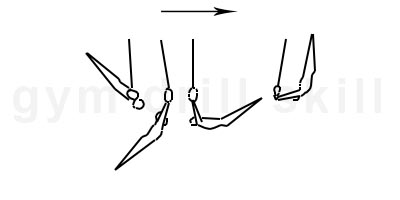
At the highest point in the back swing, the shoulders should be extended with the rings going slightly sideways. The body should be in an arched position. From the top of the swing, continuous shoulder extension toward the bottom of the swing must be maintained. This helps the gymnast maintain the arched body position until the bottom of the swing. At the bottom, the gymnast should kick the legs forward and upward to make their entire body turn over as fast as possible. The gymnast should attempt to kick from their upper chest at the bottom. Shoulder should remain extended and stay down until the entire body turns over completely. The rings should be pushed backward when the gymnast’s feet are pointed towards the ceiling. The rings should turn parallel (wrists facing one another). The rings should not go sideways during this portion of the swing. The final position is a higher point of the front swing, where the body should be in a slight hollow position with arms tight and parallel. The head should be neutral with the gymnast maintaining backward pressure on the rings. From the highest point of the front swing starts the backswing. The body should swing down in a hollow position without losing pressure on the rings. At the bottom, the gymnast should initiate a strong kick off their heels. During the turnover phase, the head should stay down to facilitate a stronger heel lift. Shoulders should remain low. When their heels have risen and their toes are directed upward toward the ceiling, the rings can be slightly open, the head will be slightly elevated as well. The final position of the backswing is arched. VERY IMPORTANT: In the backswing, do not pull down on the rings. The leading motion of the move is the kick back with the heels.
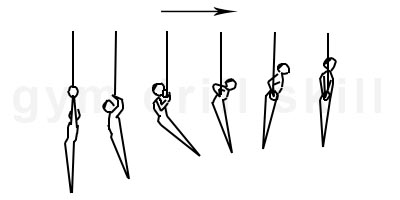
The gymnast should start in a hollow hang position. The gymnast should hold onto the rings with a false grip, flexing their forearms. They should start with a pull-up, ensuring that the rings are close to each other. The transition between the pull-up and dip portion of the skill must be done with the rings close to each other in front of the chest. The gymnast should lean forward and pull the rings below their armpits. They should push upwards into the support position above the rings. Work to perform the muscle-up in a hollow body.
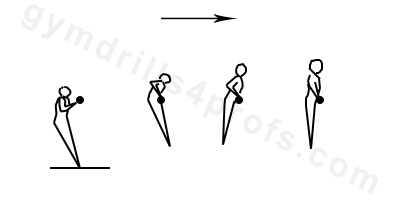
Perform this drill on a low bar, or stack mats below a high bar for a similar effect. The gymnast should perform a muscle-up similar to one on rings. They should do a small jump from the floor and work on shifting their wrists at the same time.
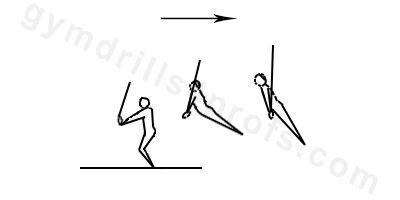
Lower the rings so that they are approximately the height of the gymnast’s stomach. The gymnast should jump with their arms tight and perform an outwards circular motion. The gymnast should catch themselves in front support on the rings, keeping their hands close to their sides.
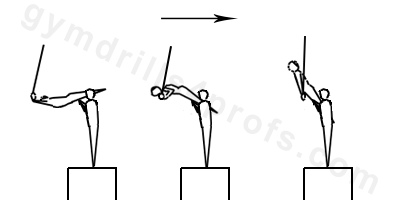
The gymnast should hang on the rings with false grip. In the backswing the gymnast should perform a muscle up with a spotter. Multiple muscle-ups should be performed in a row to build strength and familiarize the gymnast with the support position. It is important for the gymnast to shift their wrists on top of the rings as they perform this exercise.
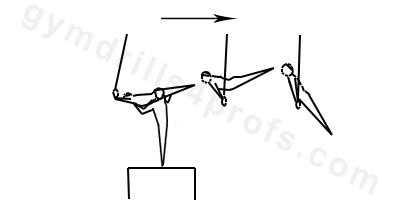
The coach should spot this drill by placing one arm on the gymnast’s chest while the other is used to push their legs. The gymnast should do an outwards circle with the arms tight. Gradually, the amount of spotting should decrease as the gymnast becomes familiar with the skill.
Integral part of gymnastics coaching process are skill drills. They help gymnasts to learn easier and technically correct. With GYM DRILL PRO you will find variety of ideas for the most the basic gymnastics skills. There are plenty of images with skill drill progressions. It is intended to support explicitly the qualified coaches in their daily coaching business. DO NOT practice without the guidance of proper professionals.